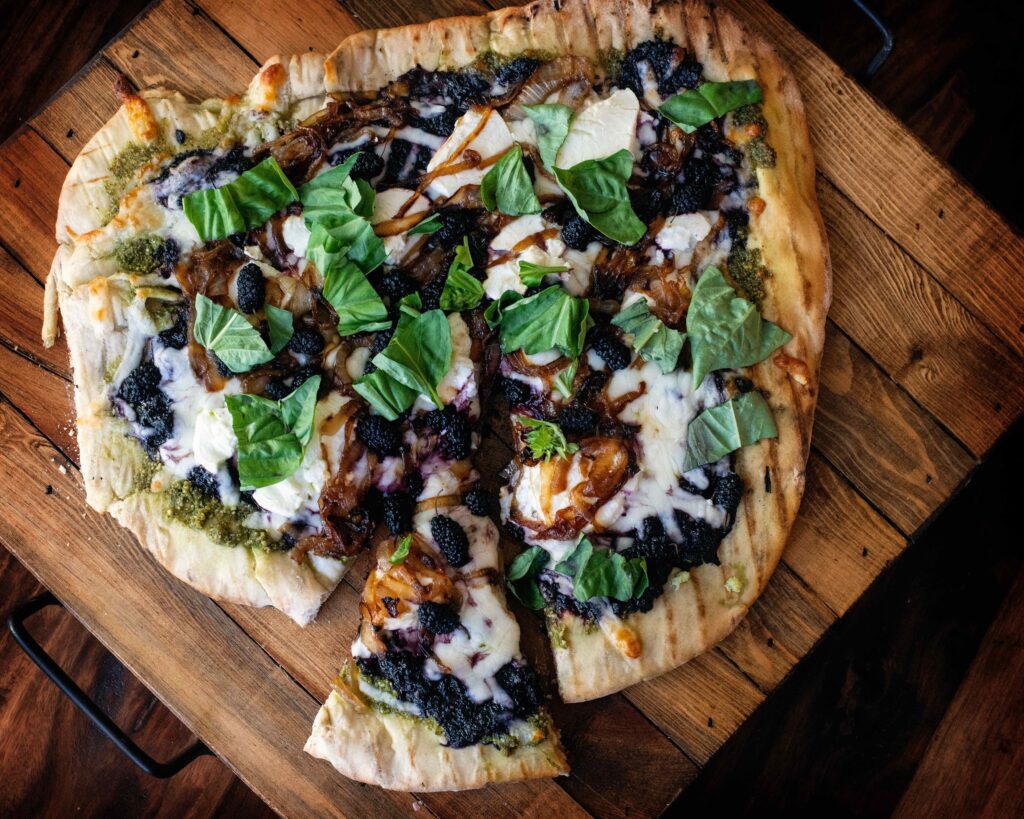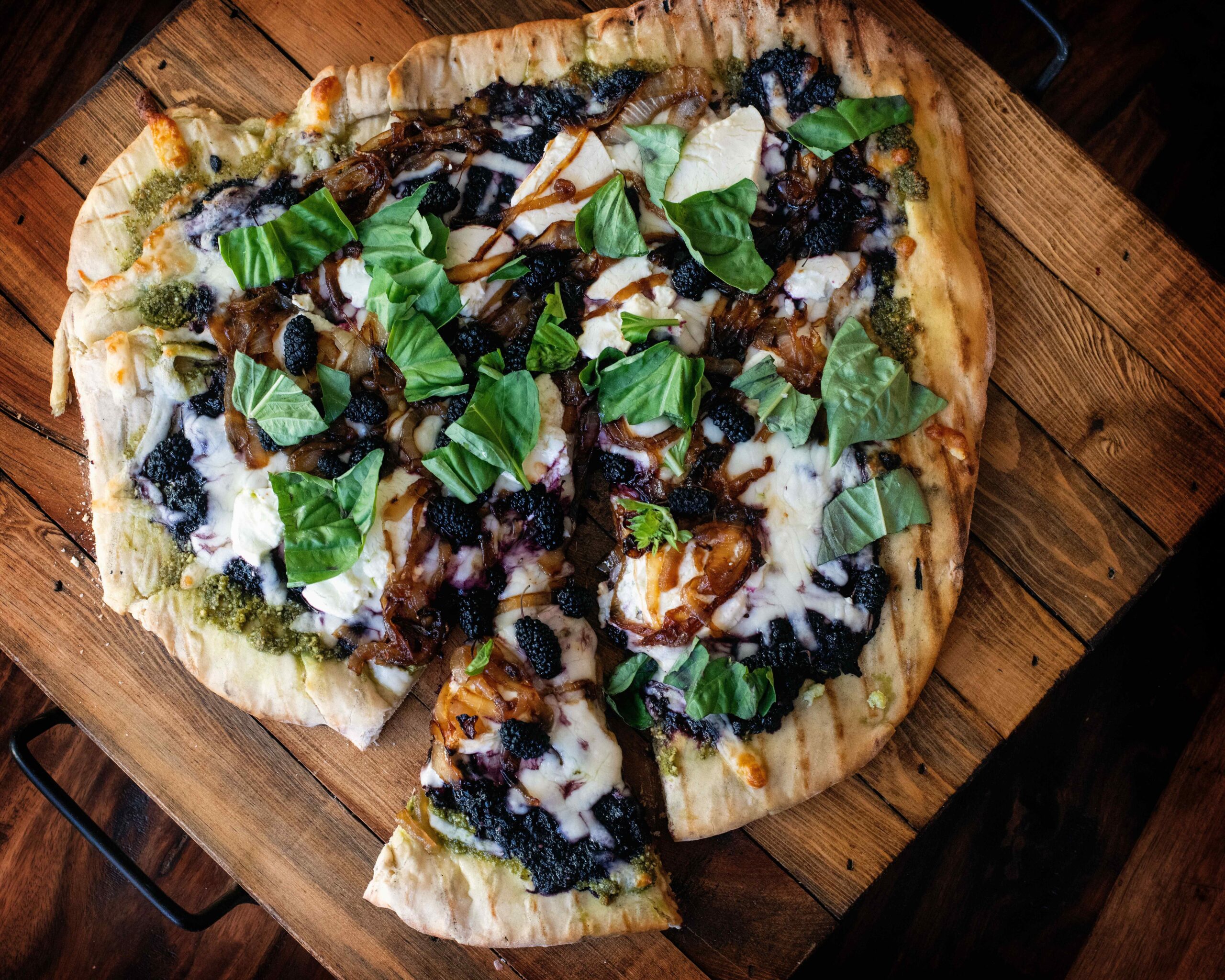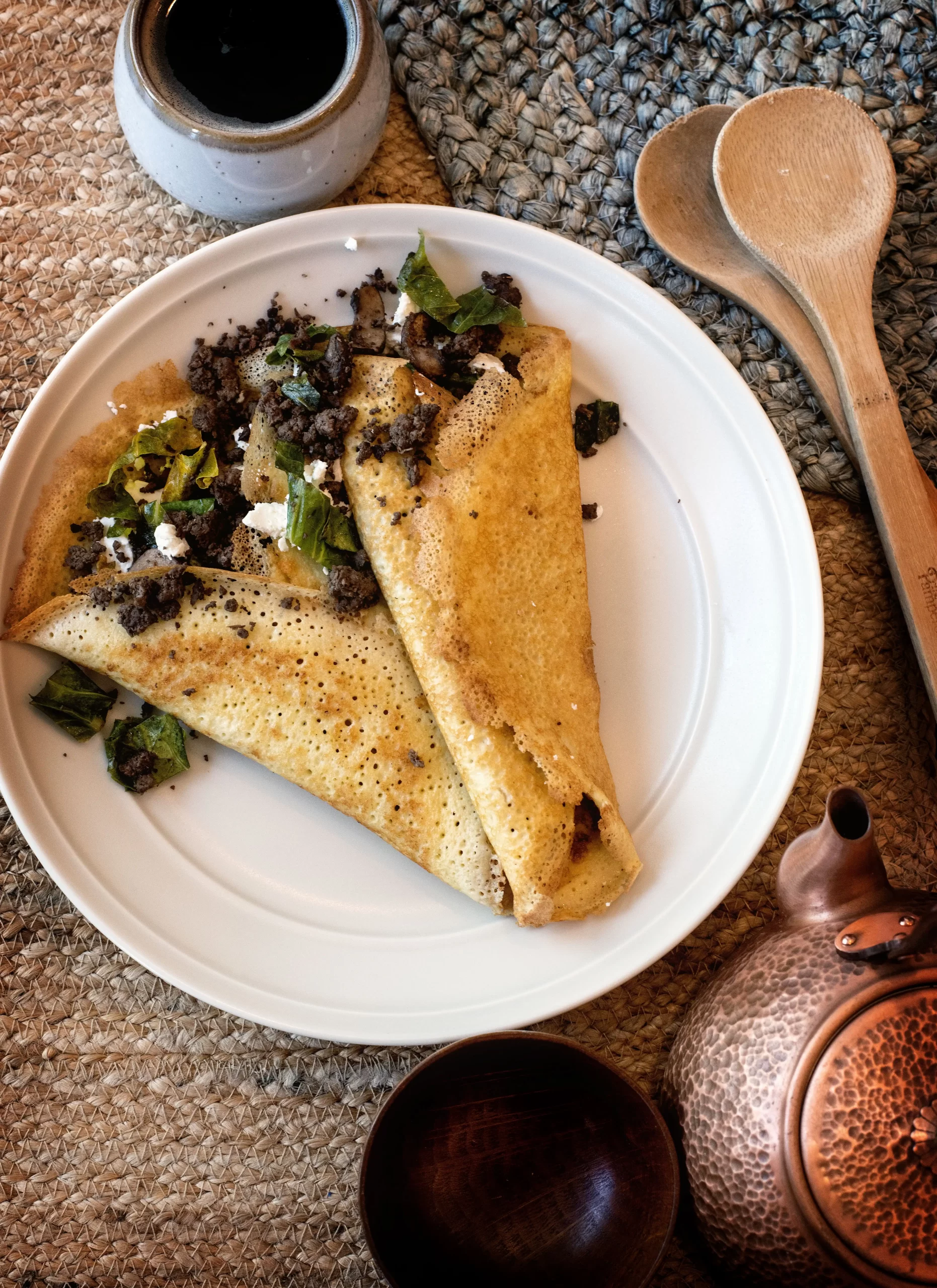Some information may be outdated.
Typically found staining sidewalks, the mulberry is an incredibly under-utilized fruit. While most people think of the berry as a nuisance, creating purple van Gogh-style messes on the bottom of shoes, their sweet and tangy flavor is perfect for a variety of culinary experiences.
Mulberries can be used in pies or crumbles, for building complex wines or liquors, as hearty and rustic glazes for meats, or even in crazy-sounding dishes like pizzas or grilled cheeses.
Their flavor is also much richer and even a touch savory when compared to a blackberry or raspberry. While adding sugar to the berries results in sweet desserts, the core flavor of the berry works beautifully for heartier meals.
Despite their physical resemblance to the raspberry and blackberry, mulberries are a closer relative to figs. In the United States, two varieties of the mulberry tree grow: red mulberry and white mulberry. The red mulberry is native to North America and found in eastern Canada and the United States. The tree is listed as a rare or threatened species in the United States and endangered in Canada.
The white mulberry, an invasive species in the United States, is much more abundant than the red mulberry and has established homesteads throughout the entire country. Despite the tree’s name, the berries on the tree range from a pale white color to lavender, crimson, and finally, the royal purple most people associate with the berry.
The white mulberry made its first appearance in Utah during the late 1800s. Brigham Young, president of the Church of Jesus Christ of Latter-Day Saints and first governor of the Utah territory, worked to establish self-sufficient industries in Utah to build a strong economy. Silk manufacturing was one of them.
Young ordered silkworms and 100,000 white mulberry trees from France. Following a traditional metamorphic cycle from worm to moth, the silkworm spins a silky cocoon for its transformation from larvae to a winged creature, and this cocoon is prized for silk making. Where does the mulberry tree play into this? The sole food for the silkworm is the leaves of the white mulberry tree.
Many Utah residents planted the trees in their yards and then fed the leaves to the hungry worms. Once the worms went into their cocoon, the residents collected the silky sacs, boiled them to release the tiny silk fibers, and passed them along to a resident skilled in silk reeling. The industry required a lot of hard work and patience, but for a short time, silk-making was a thriving industry in Utah.
In the early 1900s imported silk became cheaper, so the silk industry closed its doors in Utah, but the mulberry trees remained. Relative trees of these industrial white mulberry trees can be found in backyards and along streets of most Utah towns, and their sticky, staining, sweet fruit ripens each year from late May through July.
Mulberries are not commercially sold due to their harvesting difficulty. The delicate fruit must be hand-picked, making harvesters easily identifiable by the deep-purple ink stains covering their fingertips, and also has a relatively short shelf-life. Foraging the berry makes for a great family outing, albeit a bit messy, and the harvests can be used for many recipes.

Recipe Name: Wild Mulberry Pizza
Serving Size: 4 to 6 servings
Time to make: 45 minutes
Ingredients
- Pizza dough
- 2 and ½ cups fresh basil leaves
- ¼ cup extra virgin olive oil
- 1 clove garlic, minced
- ½ cup walnuts (or any nut you have on hand, including pinenuts or pecans, etc)
- ¼ cup shredded parmesan cheese
- 2 cups fresh mulberries
- 4 large yellow onions, thinly sliced
- 2 tablespoons oil for onions (I used avocado oil, but you could use olive oil)
- 1 tablespoon salt
- 1 tablespoon balsamic vinegar
- 1 cup shredded mozzarella
- 6 oz goat cheese
- Balsamic glaze
Instructions
- Since they require the most time, start the caramelized onions first. In a large, cast-iron pan, add two tablespoons of cooking oil of your choice. I used avocado for this recipe, but olive oil or canola oil work as well. Heat the oil over medium-low heat and add the four thinly sliced onions. In the beginning, the onions may overwhelm the pan, but they will cook down quickly.
- Stir the onions and ensure they are coated in cooking oil. Slow-cook for ten minutes over medium-low heat. Ensure the heat is high enough to soften the onions, but not so high the onions are burning. Stir every few minutes to prevent onions from sticking to the pan.
- After ten minutes, sprinkle the onions with a tablespoon of salt. Allow to continue slowly cooking for an additional ten minutes. The onions should be soft and start to brown slightly by this point. Continue occasionally stirring throughout the cooking process.
- Add the tablespoon of balsamic vinegar to the onions, stir to coat, and continue cooking until the onions reach the desired level of caramelization, about ten minutes. I stopped mine after ten additional minutes, but the actual cooking time depends on the moisture content of the onions and could take up to an additional half hour.
- While the onions are caramelizing, preheat the grill to high heat and the oven to 400 degrees Fahrenheit.
- Prepare the basil pesto. To the food processor, add a cup and a half of fresh basil leaves. Reserve a half cup of the basil leaves for topping the pizza after cooking. Pulse the leaves two or three times to coarsely chop.
- Add the garlic clove and walnuts to the food processor. Pulse two or three times to chop.
- With the food processor running, slowly stream in ¼ cup olive oil until a smooth paste is formed. Once the paste is well blended, add the parmesan cheese to the food processor and pulse a few times to incorporate. Remove basil pesto from the food processor and set aside.
- To the food processor, add one cup of fresh mulberries. Reserve the additional cup of whole berries for topping the pizza. Pulse the mulberries two or three times, just enough times to create a chunky, rough jam for spreading on the pizza.
- Roll out the pizza dough to desired thickness. Place it on the preheated outdoor grill. Cook for one to two minutes and then flip for an additional two minutes. The dough will bubble when it is ready to flip on the first side. Remove from grill and it’s time to start topping the pizza!
- On the pre-cooked pizza crust, spread a thin and even layer of basil pesto. Next, add a layer of ground mulberry. Spread the cup of shredded mozzarella over the mulberry jam. Next, add a few tablespoons of the caramelized onions. Finally, drop chunks of the goat cheese and the whole mulberries on top of the pizza.
- Cook in the preheated oven for twelve minutes, until the goat cheese is gooey and the crust is slightly browned.
- To serve, tear up the reserved fresh basil leaves and sprinkle over the warm pizza. Drizzle with a healthy serving of balsamic glaze. Enjoy!
Appreciate the coverage? Help keep local news alive.
Chip in to support the Moab Sun News.





